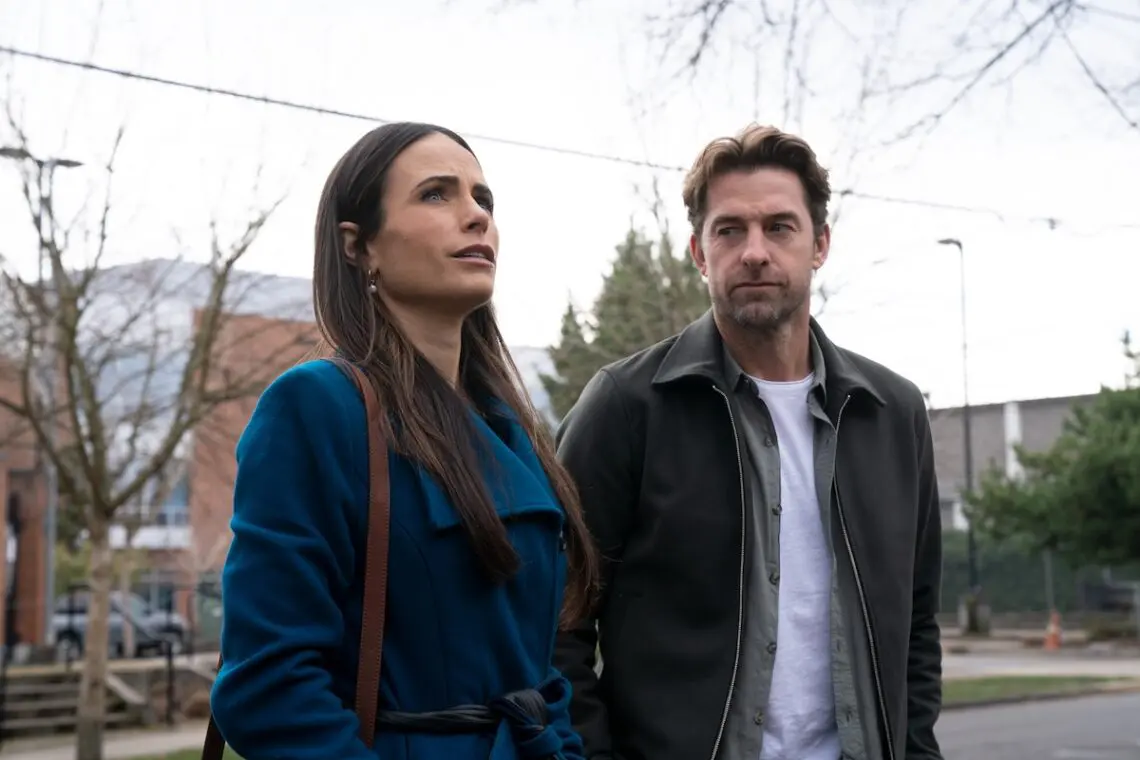Cellar door: A thriller that leaves suspense at the door
The thrill that wasn’t
In the horror genre, the “Bluebeard”-like premise of “Cellar Door” — where a couple is gifted a luxurious home with one strict condition to never open a particular door — sets an eerie expectation. Yet, Vaughn Stein’s thriller, despite its promising setup, ultimately fails to deliver the chills. Viewers might find themselves disappointed as the film never actually reveals what lies behind the titular locked door. Starring Jordana Brewster and Scott Speedman, the film premieres through limited U.S. theaters and on-demand platforms on November 1st.
Character depth and plot pitfalls
The film introduces us to John (Speedman) and Sera Winters (Brewster), a devoted couple with relatively nondescript personalities. John, an architect, and Sera, a mathematician and pianist, relocate to the suburbs of Portland, Oregon, in an attempt to recover from a recent miscarriage. Their search for a new home brings them to meet the enigmatic Emmett Claybourne (Laurence Fishburne), who offers them an opulent 1918 Jacobean Revival mansion, free of charge, with one glaring condition: never enter the cellar.
John’s cautious skepticism sharply contrasts with Sera’s ecstatic relief in their newly found “perfect life.” This juxtaposition sets the stage for John’s growing curiosity and obsession with the forbidden cellar, deepening the film’s tension.
An unraveling mystery
As the story unfolds, the aura of suspense becomes thin. During a party thrown by the Winters, a former tenant (Chris Conner) dramatically warns them of the house’s sinister nature, utilizing clichés reminiscent of “burn it down before it’s too late.” Yet, the feared supernatural threat fails to materialize, rendering this warning moot and further deflating the expected tension.
Interestingly, the human drama poses an equally compelling threat. John’s past infidelity with his coworker Alyssa (Addison Timlin) resurfaces, bringing chaos into their seemingly serene life. Alyssa, channeling a classic “woman scorned” trope à la “Fatal Attraction,” aims to destroy John’s life through false sexual harassment claims, pushing the narrative into a soap-operatic crisis.
Atmospheric and stylistic missteps
Despite a brief dalliance into retro erotic-thriller territory, *“Cellar Door” lacks the sinister atmosphere necessary for a compelling horror experience. The film’s setting, which could have been ripe with “olde dark house” creepiness, feels more like a lifestyle-magazine photo spread, thanks to production designer Angela J. Smit and DP Michael Merriman’s polished yet bland aesthetic choices.
Furthermore, Marlon E. Espino’s musical score leans towards melodramatic rather than menacing, further diminishing the intended suspense. The screenplay by Sam Scott and Lori Evans Taylor offers clunky dialogues that undermine character depth, such as lectures that awkwardly intersperse statistics, chaos theory, and the butterfly effect, seemingly to add intellectual depth without true substance.
Lost in translation
Director Vaughn Stein cites influences ranging from Edgar Allan Poe to “Gone Girl,” “Rebecca,” and “Rosemary’s Baby.” However, these inspirations feel clumsily stitched together, resulting in a narrative lacking the thrill and coherence needed to enamor the audience. The script’s implausibilities could have been more palatable with a bolder stylistic commitment or more nuanced suspense.
Ultimately, while the “Cellar Door” sought to engage with classic horror tropes, its execution left much to be desired. It might be more remembered for the missed opportunities in its quasi-haunted-house setting than for any sustained scares or suspense.
Are you a fan of the genre and want to keep up with the latest? Share your thoughts about this article on your social platforms and stay tuned for more updates!

 Italian
Italian







